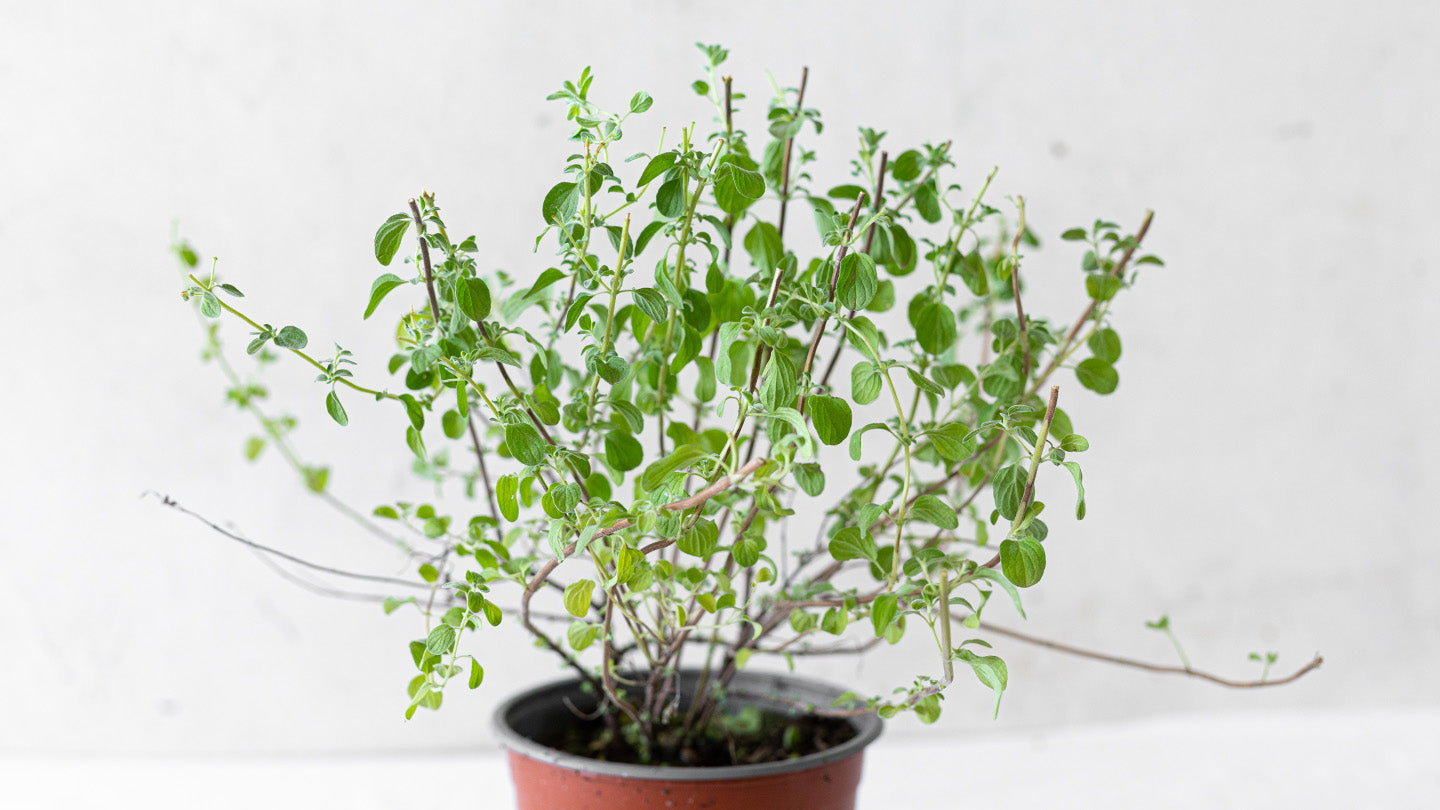cybloom
Oregano
Regular price
€4,90 EUR
Regular price
€5,50 EUR
Sale price
€4,90 EUR
Unit price
per
Tax included.
Couldn't load pickup availability
Family: Lamiaceae
Origin: Europe, Asia, Mediterranean
Temperature & Humidity: Oregano can tolerate heat and even fairly cold temperatures, depending on the variety. Its ideal growing conditions are around 60 to 80 degrees Fahrenheit. It generally does not like high humidity and must have sharp soil drainage and good air circulation in humid climates.
Lightning: Most oregano varieties need full sun, meaning at least six hours of direct sunlight on most days. However, some varieties, including golden oregano, prefer a little shade from strong sunlight to prevent their leaves from scorching.
The Soil: A sandy loam is ideal for growing oregano. If the soil is moist with lots of organic matter, oregano won't perform as well as it does in well-drained, light, dry soil. Also, a slightly acidic to neutral soil pH is best.
The Soil: A sandy loam is ideal for growing oregano. If the soil is moist with lots of organic matter, oregano won't perform as well as it does in well-drained, light, dry soil. Also, a slightly acidic to neutral soil pH is best.
Watering: Oregano only needs about an inch of water per week and is tolerant of moderate drought. Allow the soil to dry out between waterings. Overwatering can cause root rot and other problems.
Fertilizer: Oregano typically doesn't need fertilization, as it can thrive in poor soil. In fact, large amounts of nutrients, such as nitrogen, can change the flavor of the herb.
Transfer: For potted oregano, you can use any well-draining, general-purpose potting mix. To improve drainage, consider blending it with some extra sand, perlite, or vermiculite. It's generally a good idea to repot a mature oregano plant every couple of years, dividing it as necessary to ensure that light can reach all areas of the plant.
Reproduction: Oregano is best propagated from divisions or cuttings. (Because different species of oregano plants.) Both dividing a mature plant and taking cuttings can help to rejuvenate it,can cross-pollinate, you might not get what you expect from seeds you save from garden resulting in bushier growth and a healthier harvest.
Features of Care: Oregano generally only requires overwintering maintenance in zones 4 and colder, though be sure to check the growing requirements on your particular variety. In cold-winter climates, cut back the stems of the oregano plant after the first frost kills the foliage. Leave a short umbrella of stems to protect the root ball. Also, cover the soil with 3 to 4 inches of dry mulch for the winter. Remove the mulch in the spring as soon as the snow melts.
Difficulties: Few pests and diseases bother oregano plants. However, keep an eye out for spider mites and aphids on the foliage. Also, watch out for root rot and other fungal diseases that can arise in wet soils. Correcting the oregano plant's growing conditions often can help to resolve minor pest and disease issues


